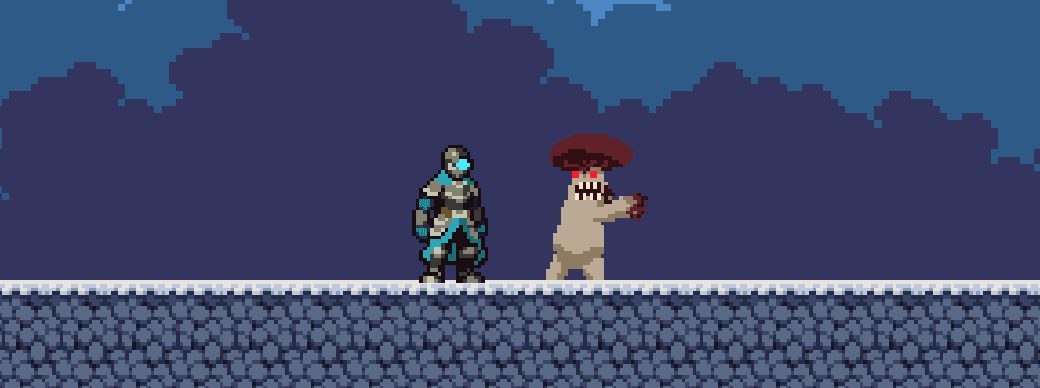
Fuccet: Space Knight was a group project that was mostly a learning experience than a finished game. I learned more in-depth mechanics of the Unity Engine as well as how organization is an important factor in the development process. This project is not finished, and was in development for about 8 months, before being ultimately scrapped. The reasons for which will be later explained. Starting off the development, we were figuring out the type of game we wanted, the goals to set in mind, and the design of the characters and world. We knew right from the start that a 2D side scrolling game would be best for us, as that is what most of our team members were comfortable with. We went through several ideas in terms of the genre of game we were looking for, but ultimately, we all really loved the idea of a game about progression, where you start all powerful, then get reset in a sense, and each pivotal moment in the game led to you becoming stronger like you once were, leading to defeating the end game boss. With the theme of progression in mind, we wanted an action game, specifically in the style of Souls-like, where bosses were feats of accomplishments that took many tries to beat. We also decided on a sci-fi medieval theme as it was most unique for this genre of game. After nailing down the ideas, we moved onto concepts for the game.
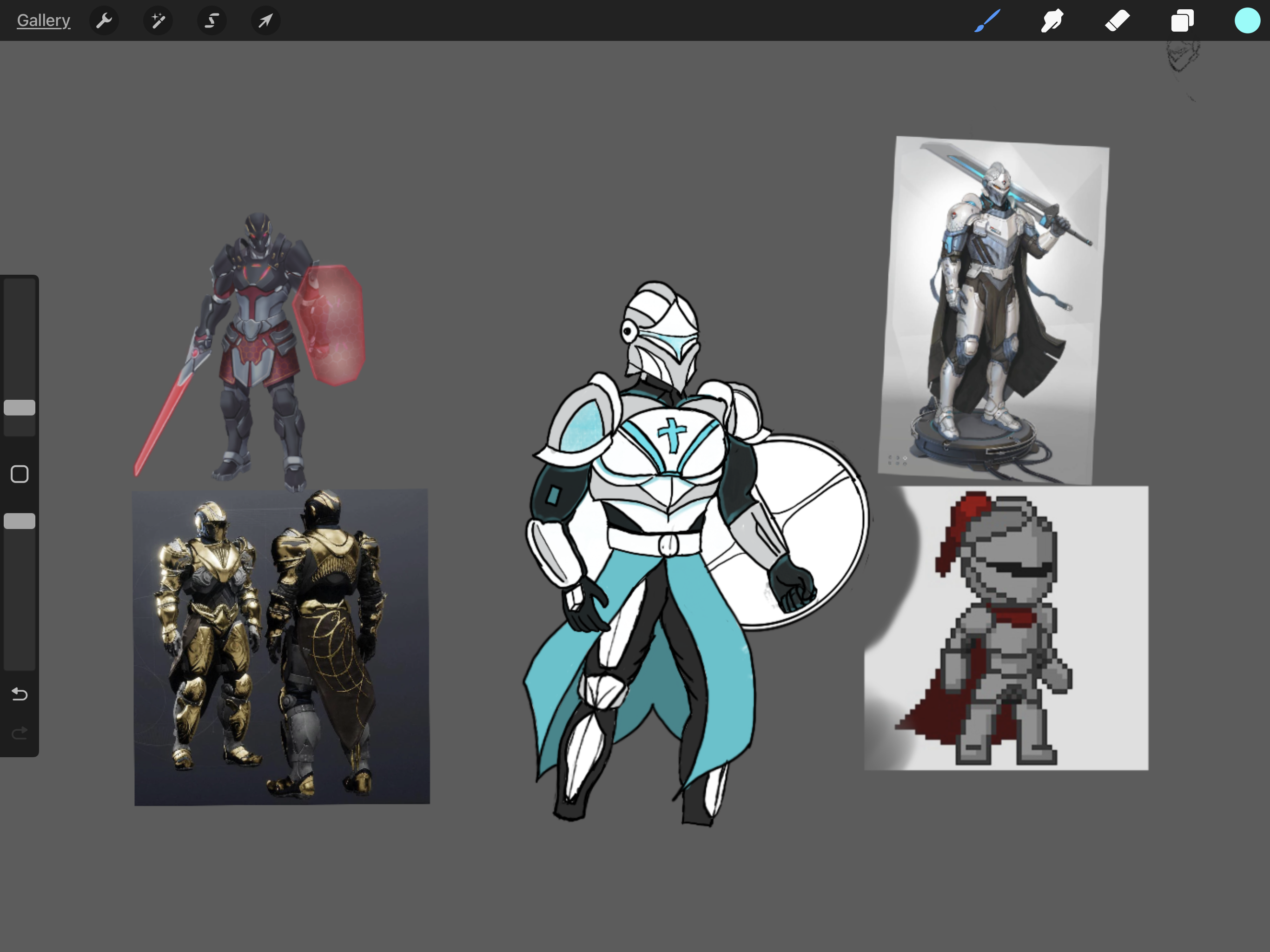
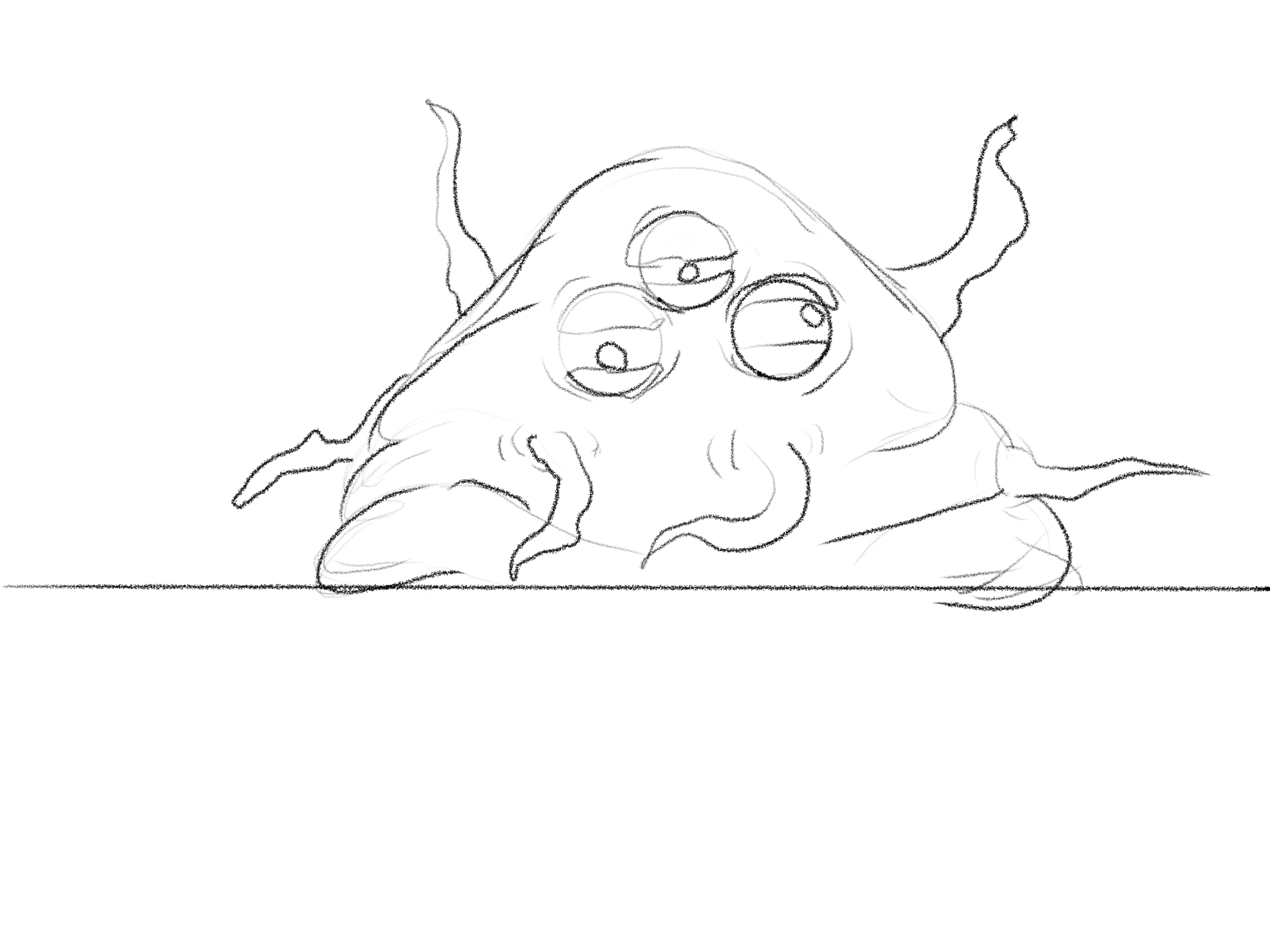
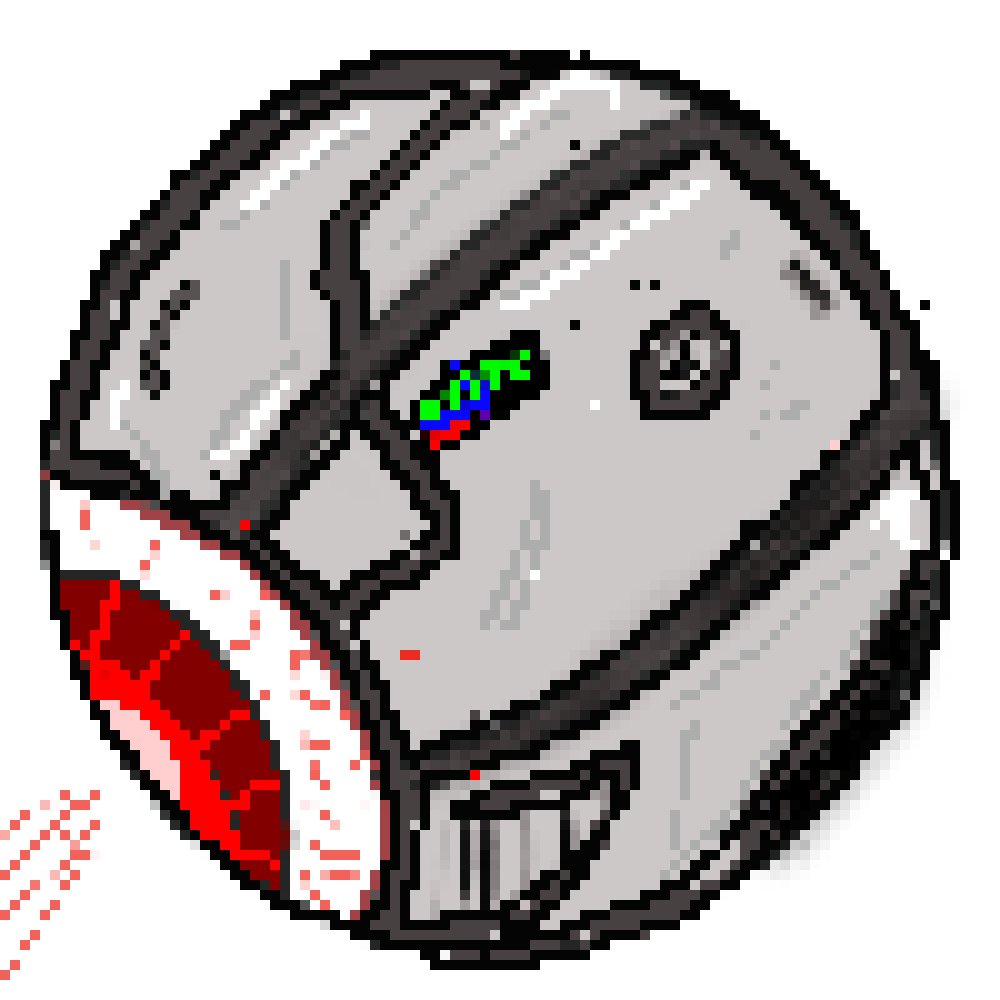

Bosses for the Boss Rush
During the early stages of the game, we had members of the team draw up several ideas for the bosses. We came up with three different bosses, the Ghoul, the Brother Eye, and the Hivemind. Each boss would play a pivotal role in defining the progression of the character. The first boss, Ghoul, was supposed to be an extremely barebones boss, its attacks would be simple and not complicated at all. As the first boss of the game, we intended him to be extremely easy, where he wouldn’t do much damage. It would also teach the player about basic movement and dodging, which is an important mechanic for the other bosses. After defeating him, the Ghoul would grant the player with the shield, which allowed to block projectiles, but wasn’t good at deflecting big hits up close. The next boss, Brother Eye, was supposed to be a bit more complicated and difficult. It was going to have a ton of HP, be floating around, and shoot projectiles at the player. This boss was meant to teach the player how to use the shield properly as well as keeping dodging in mind as it gave frames in which the player could not be damaged. This boss would drop the gauntlet, which allowed the player to shoot lasers. The final boss, Hivemind, was going to be the hardest boss, with the most amount of health, and the most to deal with, where he would spawn small enemies that had to be killed with lasers from the gauntlet. The boss itself wouldn’t deal damage, just the spawns, but they would continually spawn and be overwhelming if not dealt with. The boss could only be damaged with sword attacks, not by using the gauntlet. As this was the last boss, we decided it wouldn’t drop anything and that would be the end of the game.
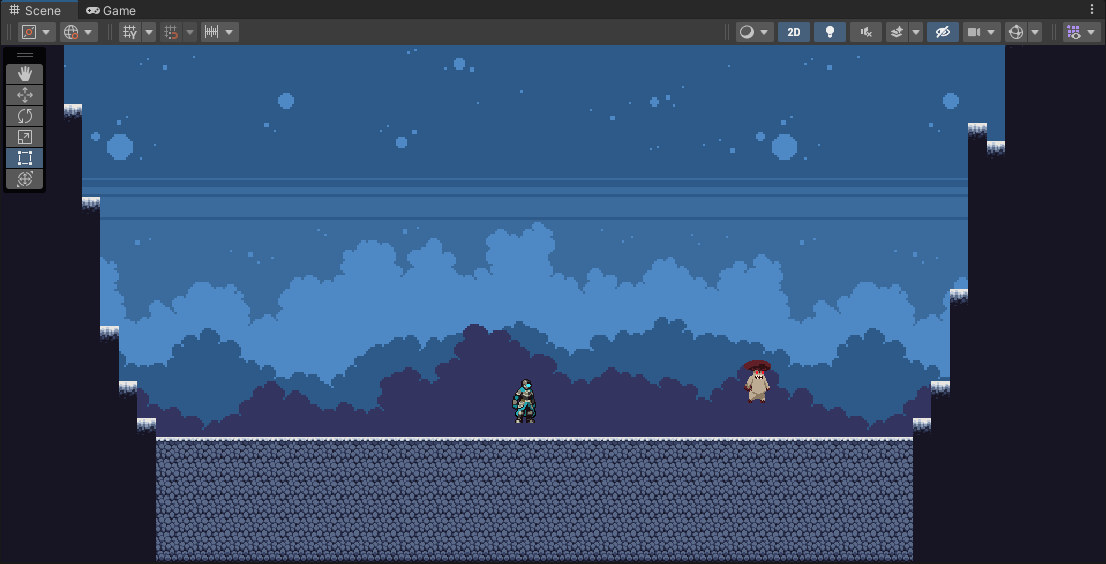
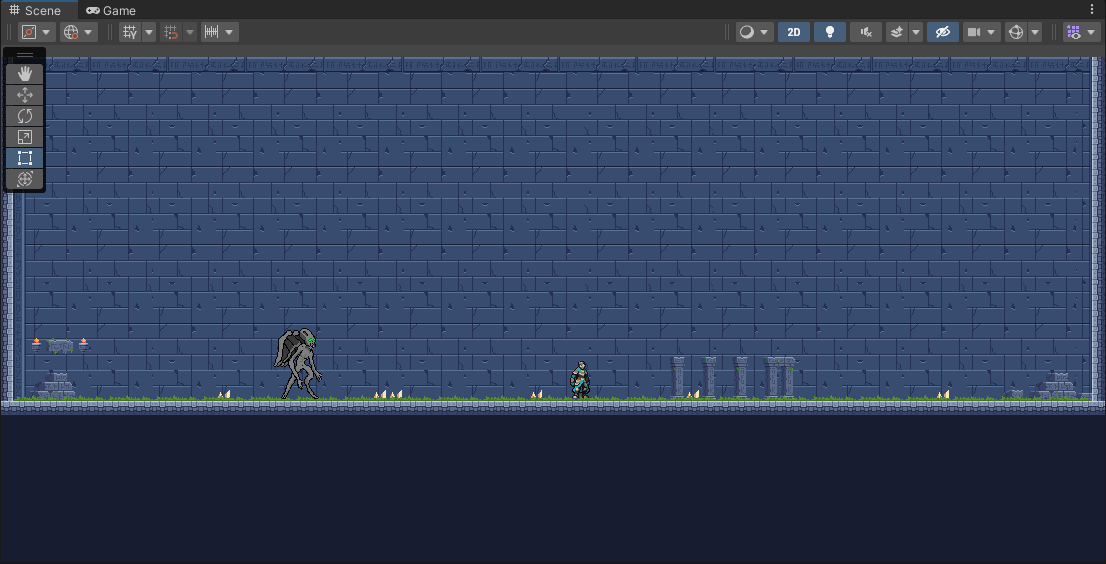
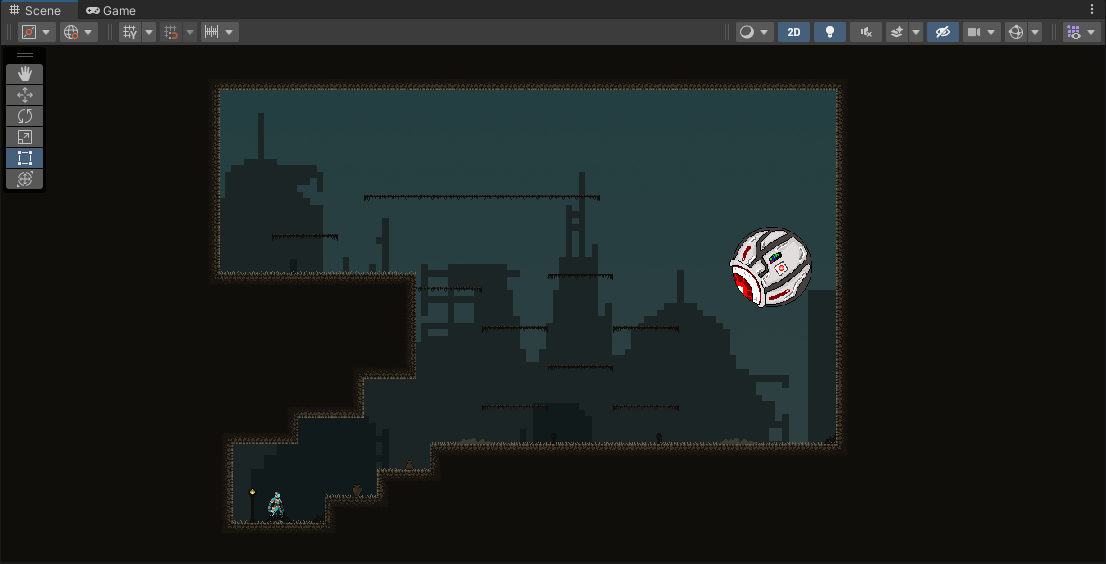
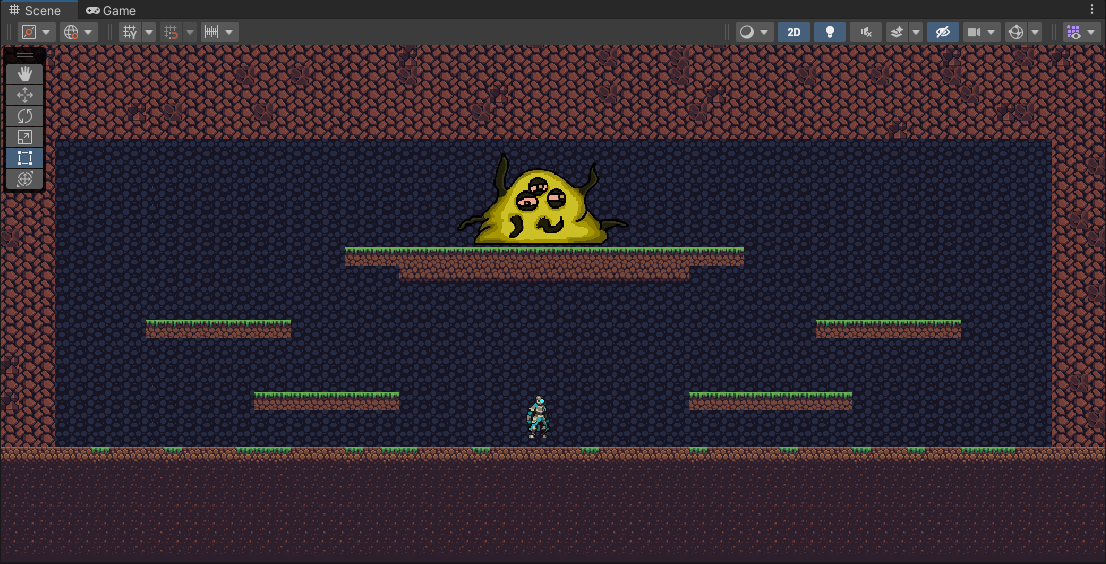
Boss Levels
The development of the game was a bit sporadic but a huge learning experience for me when it came to the levels and their bosses. The development of the game started slow, with little work being done as some of the members were not used to working with some of the features of the Unity engine so they had taught themselves. I had a bit of experience at the time, so I was often helping others develop inside the engine. While teaching some of my team members, I was developing with the movement mechanics of the main character as well as the animations and sprites of the main character and bosses. I specifically worked on Hivemind sprites using Procreate, making sure all the animations looked fluid and creature-like based off our concepts. The movement in the game was a bit tricky to nail down, as we wanted to the character to feel tight and smooth, but with the space theme, we also wanted levels to feel a bit floaty. We were able to find a good middle ground by designing many of the levels to involve jumping and moving around. This allowed the character to feel a bit more weightless when fighting bosses. The level design was an integral part to making each boss feel unique. Due to my previous history working on levels in Final Fight, I was tasked with doing environmental and level design. I followed a set theme and layout based on their attacks and what they looked like. The Ghoul has a normal easy-going area, with no major platforms, just a big boss room with designs to reflect the aesthetic I was going for, which were based on ruins. Brother Eye was a bit of an escape from the other two, where it was a futuristic run-down city on an extraterrestrial plane. This meant lots of platforms and an area for the player to retreat to from the boss. The final boss, Hivemind, has a big open arena for the player to deal with the spawns, and big platforms to lead up to the boss so they could hit them. Although by design, we wanted it to be a room with a smaller ceiling as to give the player a bit of a challenge when it comes to fighting the spawns. In theme with the boss, the room was designed to look and feel underground. All these elements, level design choices, and assets helped make each boss feel very in place.
Ending Thoughts
In the end, this project was not able to be completed, and many of the objectives we set in mind were not able to be done due to time constraints and change of mind/direction. The items that the bosses would have dropped was never able to be completed and some of the combat and bosses’ mechanics were unable to be implemented. Every time the team would implement a mechanic for a boss, it would completely break other enemies or the boss itself. This was mostly due to not having implemented accurate version control with a bit of lack of direction. If we had one voice to lead the whole group and a better system setup for Git control, the project could have been in a more complete state. We also tossed around the idea of having levels in-between the bosses to give the game a bit more depth, as well as some more practice for each of the items they acquired from the bosses, but sadly those ideas were out of the scope of our project and deadline. Overall, although the project did not meet many of its goals, we set out to develop systems, levels, design, and gameplay that was unique in its own sense. With more time and direction, the project would hopefully be finished.